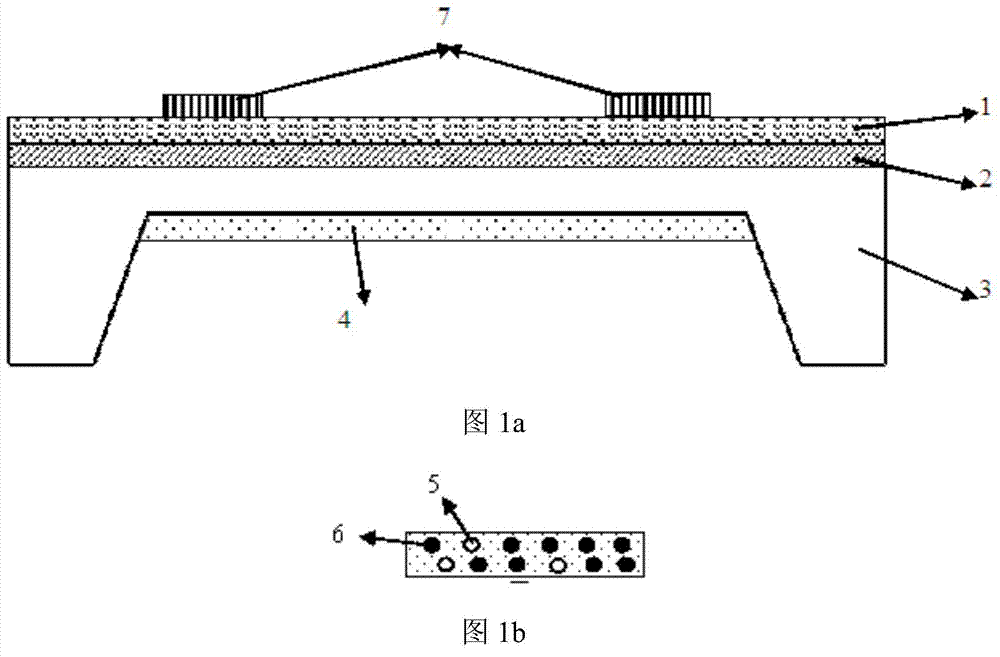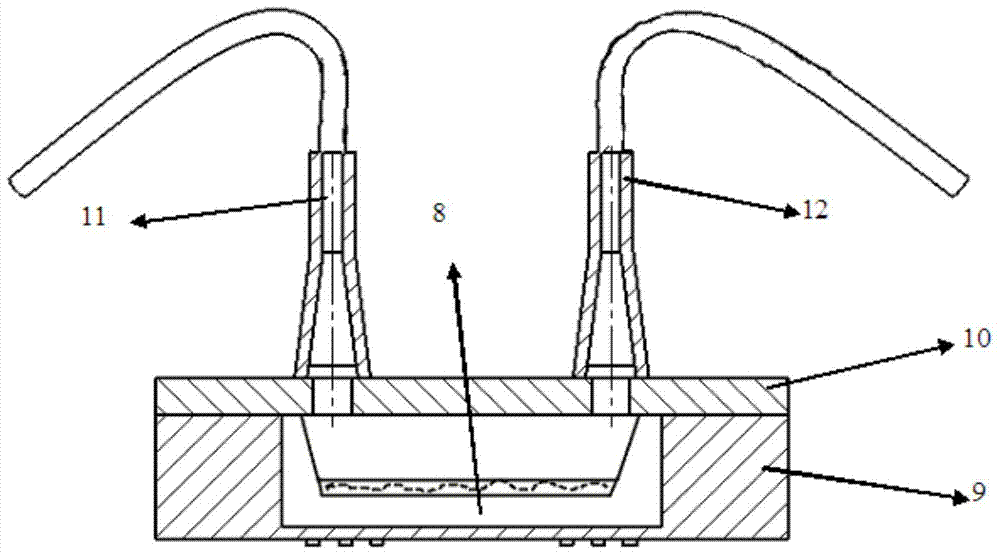Rapid detecting sensor for microcystins
A technology of microcystin and detection sensor, which is applied in the direction of material absorption and weighing, can solve the problems of false positive reaction and inability to identify toxins well, and achieves enhanced specific recognition ability, low operator requirements, Enhance the effect of specific recognition
- Summary
- Abstract
- Description
- Claims
- Application Information
AI Technical Summary
Problems solved by technology
Method used
Image
Examples
Embodiment Construction
[0021] Such as figure 1 shown. A rapid detection sensor for microcystin, comprising a silicon substrate 3 and two layers of Lamb wave thin films 1 and 2 sequentially arranged on the silicon substrate 3, the bottom of the silicon substrate 3 is modified with Microcystis by photopolymerization and electrochemical polymerization The toxin molecularly imprinted film 4 consists of a silicon substrate 3, two layers of Lamb wave films 1 and 2, a microcystin molecularly imprinted film 4, and interdigitated electrodes 7 to form a microcystin detection sensor chip 8, and the microcystin detection sensor chip 8 is packaged Finally, a rapid detection sensor for microcystin was formed.
[0022] When the microcystin molecularly imprinted membrane 4 is modified on the silicon substrate 3 by photopolymerization, methacrylic acid is used as a functional monomer, ethylene glycol dimethacrylate is used as a crosslinking agent, and benzophenone is used as an initiator. Add the ethanol mixed sol...
PUM
 Login to View More
Login to View More Abstract
Description
Claims
Application Information
 Login to View More
Login to View More - R&D
- Intellectual Property
- Life Sciences
- Materials
- Tech Scout
- Unparalleled Data Quality
- Higher Quality Content
- 60% Fewer Hallucinations
Browse by: Latest US Patents, China's latest patents, Technical Efficacy Thesaurus, Application Domain, Technology Topic, Popular Technical Reports.
© 2025 PatSnap. All rights reserved.Legal|Privacy policy|Modern Slavery Act Transparency Statement|Sitemap|About US| Contact US: help@patsnap.com



